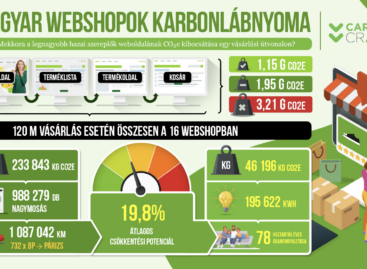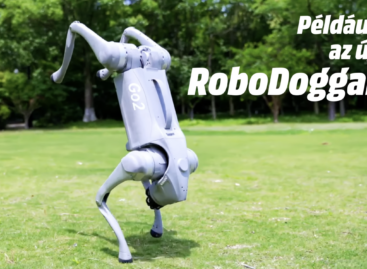Hungarian startup measures carbon footprint of largest domestic webshops
Carbon.Crane, the first Hungarian startup dedicated to ISO-compatible digital carbon footprint measurement and reduction, measured the carbon footprint of sixteen domestic webshops. The list included companies such as IKEA, Libri, BestBite and Telekom, while the most optimized routes belonged to Pepita, Media Markt and Kifli. Their measurements show that the rise of e-commerce also pollutes our environment with many invisible means – the good news is that we can easily change this.
It affects us all, yet we don’t talk about it enough
 The convenience of online shopping has become part of our everyday lives. Various e-commerce services are perfectly suited to our fast-paced lifestyle: we no longer have to go from store to store, as we can buy anything with just a few clicks. Despite the fact that the environmental impact of online stores related to delivery is often raised, few people think about the fact that visiting webshops also results in carbon emissions. High-resolution, colorful images and product presentation videos all result in CO₂e emissions, which is why Carbon.Crane decided to make the carbon footprint of webshops visible. The company measured the carbon footprint of the 16 largest domestic e-commerce players with its own technology validated by Bureau Veritas. The aim of the research is to make the hidden environmental impacts of digital presence visible and draw attention to the problem that affects us all.
The convenience of online shopping has become part of our everyday lives. Various e-commerce services are perfectly suited to our fast-paced lifestyle: we no longer have to go from store to store, as we can buy anything with just a few clicks. Despite the fact that the environmental impact of online stores related to delivery is often raised, few people think about the fact that visiting webshops also results in carbon emissions. High-resolution, colorful images and product presentation videos all result in CO₂e emissions, which is why Carbon.Crane decided to make the carbon footprint of webshops visible. The company measured the carbon footprint of the 16 largest domestic e-commerce players with its own technology validated by Bureau Veritas. The aim of the research is to make the hidden environmental impacts of digital presence visible and draw attention to the problem that affects us all.
We could have started nearly a million washes
The selection of webshops was based on PWC’s E-toplist for 2024 and the methodology used was the same for all players. The sites were measured using a new, in-house developed browser extension: the application, which can be installed in Internet browsers, in addition to the measurement, also shows what opportunities the given site has for optimizing carbon emissions from a user or programmer perspective. The carbon emissions of the sites were measured using a browser extension, which was available to the team for the first time this year.
The study covered the main paths of an average purchase: from the home page to the product list, then to a product page, and finally adding the product to the cart. The research revealed that, on average, the home pages have the largest carbon footprint and reduction potential, followed by product pages. The results speak for themselves: during the testing of the websites, as much CO₂e emissions were generated (233,943 kg CO₂e) as if we had started almost a million washes or made 732 Budapest-Paris car trips. The average reduction potential is 19.8%; if retailers were to optimize, the energy saved would cover the annual electricity consumption of 78 households.
The emissions generated by domestic players along a shopping path vary greatly. The highest emission was 3.21 grams, while the lowest was 1.15 grams. Interestingly, the homepage with the largest carbon footprint produces more than six times as much emissions as the smallest. Of all the pages examined (homepages, product listings, product pages), the smallest and largest appeared on the same retailer.
Related news
It turns out which online food ordering platform websites are the most sustainable
🎧 Hallgasd a cikket: Lejátszás Szünet Folytatás Leállítás Nyelv: Auto…
Read more >NAK announces its large-company-startup program again
🎧 Hallgasd a cikket: Lejátszás Szünet Folytatás Leállítás Nyelv: Auto…
Read more >NAK TechLab – real solutions for real problems
🎧 Hallgasd a cikket: Lejátszás Szünet Folytatás Leállítás Nyelv: Auto…
Read more >Related news
The kings of the New Year’s Eve list: hot dogs and champagne in abundance
🎧 Hallgasd a cikket: Lejátszás Szünet Folytatás Leállítás Nyelv: Auto…
Read more >The second big rush in department stores comes between the two holidays
🎧 Hallgasd a cikket: Lejátszás Szünet Folytatás Leállítás Nyelv: Auto…
Read more >A robot dog moved to Westend
🎧 Hallgasd a cikket: Lejátszás Szünet Folytatás Leállítás Nyelv: Auto…
Read more >






